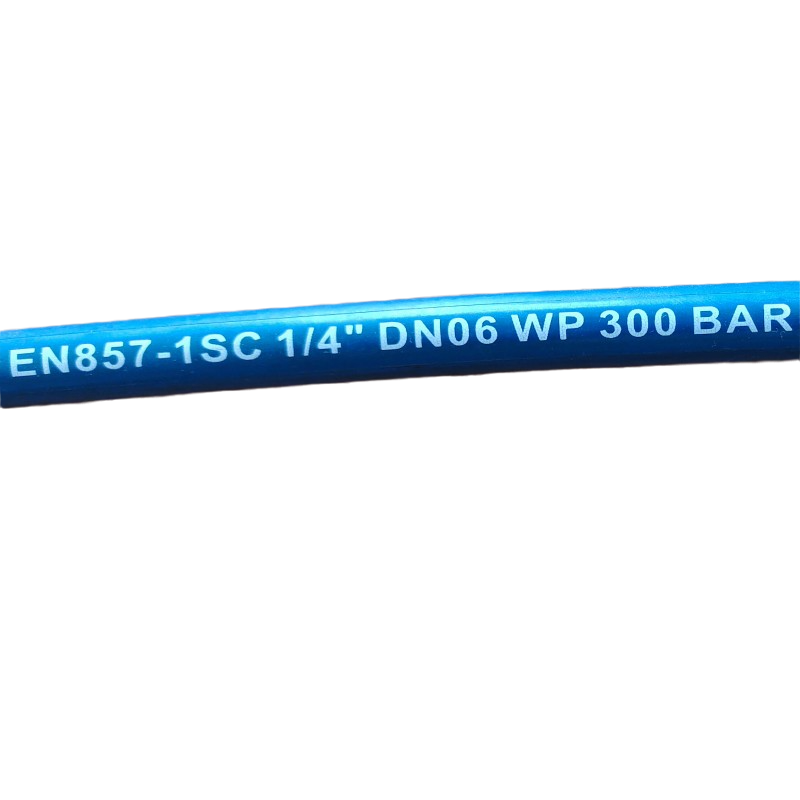335345435
Nov . 10, 2024 17:28 Back to list
Essential Elements of Hydraulic Hose Systems and Their Functions
Understanding Hydraulic Hose Components Essential Elements for Fluid Power Systems
Hydraulic systems are fundamental in various industries, from construction and agriculture to manufacturing and automotive applications. One essential component of these systems is the hydraulic hose, which serves as the conduit for fluid transfer under pressure. Understanding the components of hydraulic hoses is crucial for ensuring efficiency, safety, and longevity in fluid power applications.
Construction of Hydraulic Hoses
Hydraulic hoses are composed of multiple layers, each serving a specific purpose. The primary layers include the inner tube, reinforcement layer, and outer cover.
1. Inner Tube The inner tube is the most critical part of the hose, as it is in direct contact with the hydraulic fluid. This layer must be compatible with the type of fluid used in the system, whether it's oil, water, or other hydraulic fluids. The inner tube is typically made from rubber or thermoplastic compounds designed to resist wear, abrasion, and it must also withstand high pressure.
2. Reinforcement Layer Surrounding the inner tube is the reinforcement layer, which provides the hose with strength and flexibility. This layer is made from fiberglass, steel wire, or textile materials, which are woven together in a specific pattern to enhance the durability and pressure rating of the hose. The reinforcement is vital for supporting the hose's operating pressure and preventing bursts.
3. Outer Cover The outer cover provides additional protection against external elements, such as abrasions, chemicals, and environmental factors. Made from synthetic rubber or thermoplastic material, the outer cover must be robust enough to protect the internal components while maintaining flexibility and resistance to UV rays, oil, and other harsh conditions.
Types of Hydraulic Hoses
Hydraulic hoses come in various types, and their selection depends on the specific application requirements. Some common types include
- Wire Braided Hoses These hoses provide excellent flexibility and strength, making them suitable for high-pressure applications. They typically feature layers of braided steel wire, offering enhanced durability.
hydraulic hose components

- Spiral Hoses Comprised of spiraled wire wrapped around the hose, spiral hoses are designed for extreme pressure conditions and high impulse applications. They are often used in heavy machinery and equipment.
- Thermoplastic Hoses Lightweight and flexible, thermoplastic hoses are suitable for applications where high pressure is not required. They resist various chemicals and environmental factors, making them ideal for specific industrial applications.
Couplings and Fittings
In addition to the hoses themselves, hydraulic systems incorporate various couplings and fittings to connect hoses to components such as pumps, cylinders, and valves. These fittings are critical, as a leak at a fitting can result in reduced efficiency, fluid loss, and even hazardous conditions.
- NPT Fittings National Pipe Tapered (NPT) fittings are commonly used in hydraulic systems to create a leak-free seal when connecting hoses to other components.
- Crimp Fittings These are used to secure the ends of hydraulic hoses to connectors. Proper crimping ensures a tight fit that withstands pressure and prevents disconnection or leaks.
Maintenance and Inspection
Regular maintenance and inspection of hydraulic hoses are essential for ensuring optimal performance and safety. Operators should routinely check hoses for signs of wear, such as cracks, bulges, or abrasion. Additionally, connections should be inspected for leaks. Regularly scheduled maintenance can help identify potential issues before they lead to system failure.
Conclusion
Understanding the components of hydraulic hoses is vital for anyone involved in the operation and maintenance of hydraulic systems. The inner tube, reinforcement layer, and outer cover work together to create a reliable, efficient means of transferring hydraulic fluids under pressure. Additionally, the use of appropriate couplings and fittings is essential in maintaining the integrity of the system. By prioritizing regular inspections and maintenance, operators can ensure the longevity and effectiveness of hydraulic hoses, ultimately leading to improved productivity and safety in their applications.
-
SAE 100 R17 Black Smooth Cover Hydraulic Hose
NewsMar.07,2025
-
SAE 100 R17 Black Smooth Cover Hydraulic Hose
NewsMar.07,2025
-
SAE 100 R17 Black Smooth Cover Hydraulic Hose
NewsMar.07,2025
-
SAE 100 R17 Black Smooth Cover Hydraulic Hose
NewsMar.07,2025
-
SAE 100 R17 Black Smooth Cover Hydraulic Hose
NewsMar.07,2025
-
steel wire braided hydraulic hose
NewsMar.07,2025



